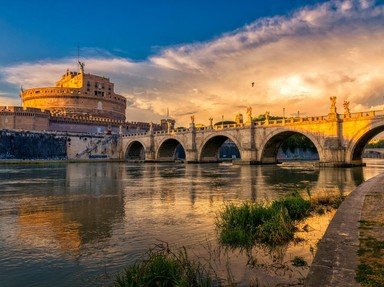Quiz Answer Key and Fun Facts
1. 8th century BC, Marketplace and political meetings
2. 4th century BC, Protection after sack of Rome
3. 139 AD, Tomb of Emperor Hadrian
4. 315 AD, Celebrated victory over Maxentius at Battle of Milvian Bridge
5. 126 AD, Temple of all gods
6. 312 BC, Facilitated military movement
7. 8th century BC, Rescue site of Romulus and Remus
8. 113 AD, Celebrated victory in Dacian Wars
9. 6th century BC, Stadium used for public events
10. 80 AD, Flavian Amphitheater
Source: Author
ponycargirl
This quiz was reviewed by FunTrivia editor
gtho4 before going online.
Any errors found in FunTrivia content are routinely corrected through our feedback system.
